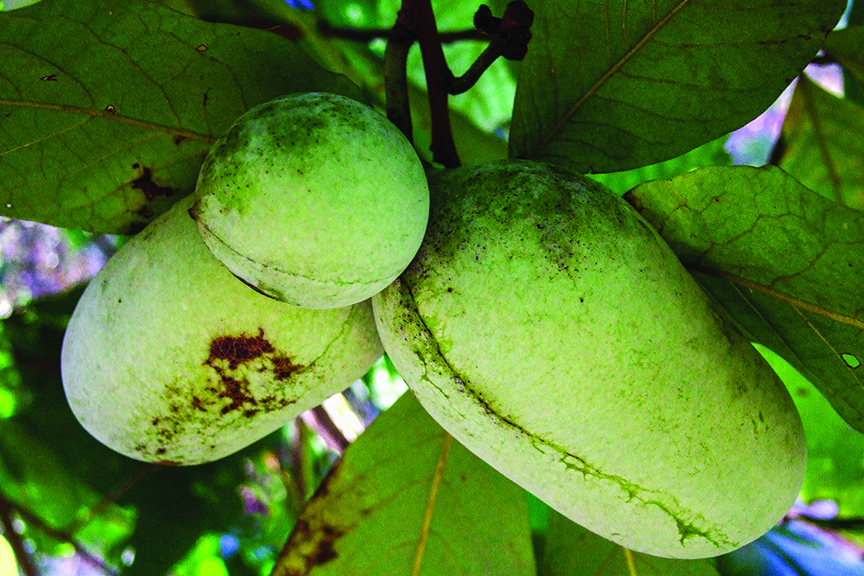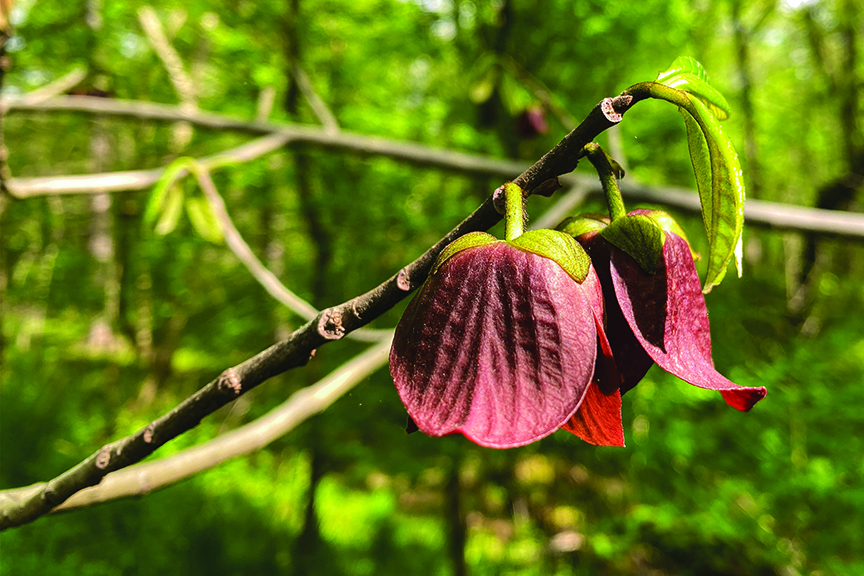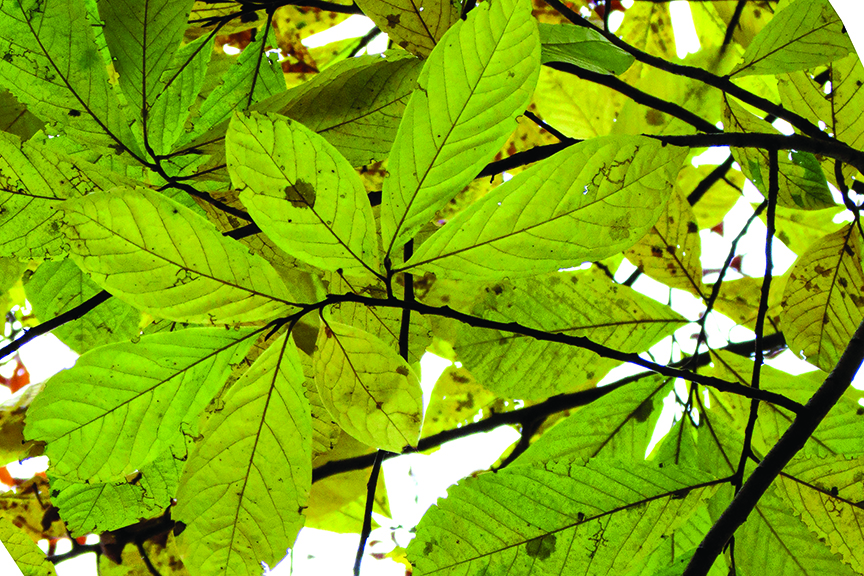America’s most overlooked fruit
August 2025

Fruit ripening on the tree. (courtesy Wendell Smith via Flickr)
by Steve Carroll, Contributing Columnist
Why am I writing about one of my favorite trees only now, nearly five years into my Branching Out series? Well, I’m not sure, but by publishing this piece in early August, I’m giving you an opportunity to find a tree or a nearby farm stand well before pawpaws ripen. You’ll thank me.
So many superlatives apply to this tree. It’s the northernmost member of the custard apple family (Annonaceae). It produces the largest edible fruit native to North America. It’s the most common understory tree in surveys done in many of the region’s parks, including the C&O Canal, George Washington Memorial Parkway and Harpers Ferry. And the National Champion — over 30 feet tall with a 35-foot crown — is growing at Monticello.
Pawpaw (Asimina triloba) grows naturally throughout most of the eastern half of the country south of the Great Lakes. It prefers moist, slightly acidic soil in bottomlands, floodplains and moist upland forests. In our region, it is common in the coastal plain and Piedmont, and more localized in the mountains.

Pawpaw flowers. (courtesy of TheTurducken via Flickr)
Pawpaw’s unusual flowers open before or as the leaves expand in early spring. At maturity, the one- to two-inch maroon-brown flowers have an unpleasant odor. This accounts for their most important pollinators — beetles and flies. If successfully pollinated, fruits mature between August and October, depending on site conditions and weather.
Pawpaws are clonal, forming large colonies from root sprouts. The untoothed leaves are easily recognized, as they can reach 6 inches wide and a foot in length. These turn a rich yellow in the fall. Pawpaw leaves are notable as the food source for caterpillars of the zebra swallowtail and pawpaw sphinx moth.

Leaves in fall. (courtesy Katja Schulz via Flickr)
It’s the fruits for which pawpaw is best known. Fruits in the wild begin as green blobs that reach 3 to 6 inches long and 1 to 3 inches wide. These eventually soften and become streaked, blotchy and aromatic. At this point, often after they have fallen, they are ready to be collected and eaten. The custardy flesh has been described as having hints of banana, mango, vanilla and strawberry — a reminder of close tropical relatives such as soursop, cherimoya and custard apple.
Pawpaw fruit can be cut in half and eaten with a spoon, being sure to avoid the toxic outer skin and large brown seeds. Shelf life is limited, so eat when ripe or freeze the pulp for later use in ice cream, pudding and other treats. Fruit taste tends to vary considerably from tree to tree, so if you find a tree whose fruits you like, remember its location. Or try one of the commercially available fruits that tend to be larger and have a consistent, dependable flavor.
Want to learn more about pawpaws? Look for nearby pawpaw festivals; read Andrew Moore’s excellent “Pawpaw: In Search of America’s Forgotten Fruit;” and visit the State Arboretum of Virginia to see its trees and walk its pawpaw trail, currently under development. And whatever else you do, be sure to locate trees from which you can (legally) collect fruit, for pawpaw season is fast approaching.
Steve Carroll is a botanist and ecologist who writes about trees, gardening and the world of plants. He is the co-author of “Ecology for Gardeners,” published by Timber Press.
